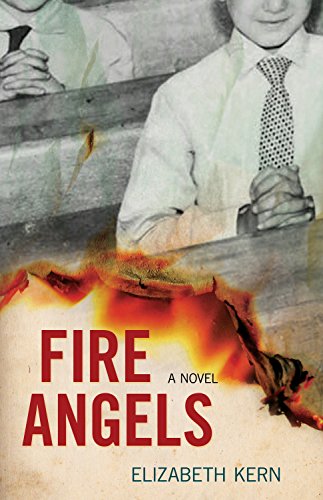Fire Angels
On December 1, 1958, a fire devastated Our Lady of Angels elementary school on Chicago’s northwest side. Kern’s novel covers the event from multiple perspectives—nuns, students, the student arsonist, and the fire itself. The school conditions were ripe for the havoc wreaked by the fire. Classrooms were overcrowded; the building was grandfathered into the fire codes without actually being in compliance; the gates were locked, preventing the fire department from immediate access. Ninety-two children and three nuns died, and multiple children were injured jumping from the second floor, where the fire was concentrated.
This cold Chicago winter in a working-class immigrant neighborhood is quite vivid. Brief vignettes give students and nuns their due; making them people the reader will mourn. Kern takes the risk of antagonizing the reader by anthropomorphizing the fire. She opens the book from the fire’s perspective, meeting the future arsonist in 1953 when he’s five, setting the tone for his home life (illegitimate child of a single mother, unpopular with other children) and his obsession with fire. The risk pays off, however. The fire shows more remorse than the church officials who gather at the lavishly appointed archbishop’s mansion in the Gold Coast to discuss how to downplay the tragedy.
The fire was a pivotal moment in Chicago history. It exposed, although did not entirely correct, hazardous conditions in buildings and overcrowding in schools. The tragedy drove the close-knit community from the neighborhood, losing the immigrant enclave, and as with so many Catholic schools, enrollment steadily declined at Our Lady of Angels. It closed in the 1990s. Kern treats all involved with respect, making this a worthy addition to the writings on this topic.










